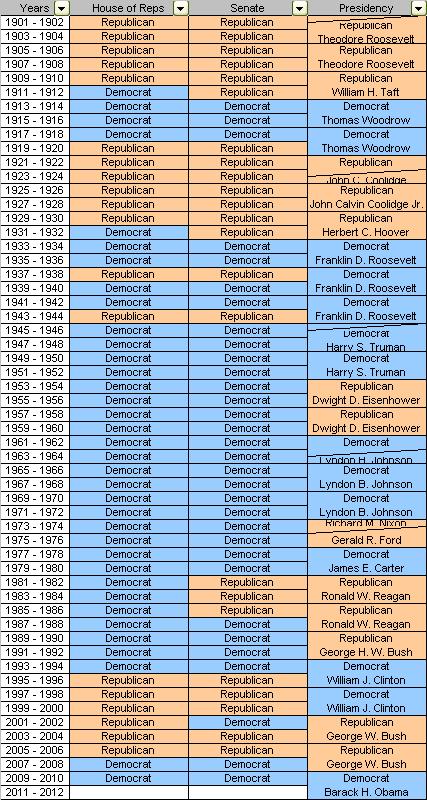Ages ago, I wrote briefly about the history of US legislative and executive power. I thought I’d update it now that the latest election has (pretty much) settled. Between 1901 and 2010, the Democratic Party will have been in power in the House of Representatives 65.5% of the time, in the Senate 58.2% of the time and had the presidency 50% of the time.
Much more interestingly, Americans seem to prefer having the same party control all three branches of US government at the same time. While pure chance would put such an occurrence at 25% (i.e. two out of eight possible configurations), it actually occurred over 61% of the time (33 congresses out of 54). Of those 33, 21 were all-Democrat and 12 were all-Republican.
Click on the image below to go through to an excel spreadsheet with the details:
